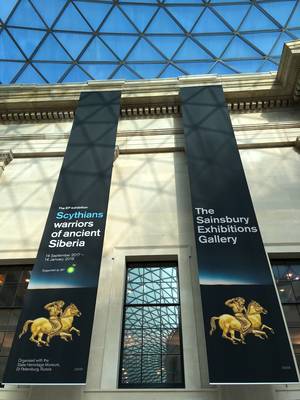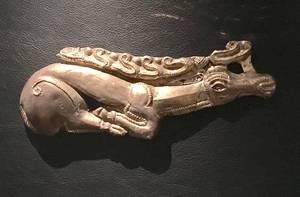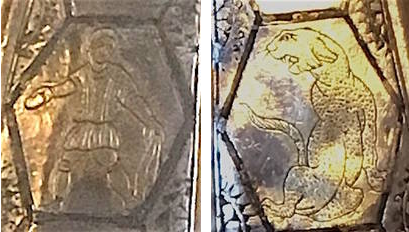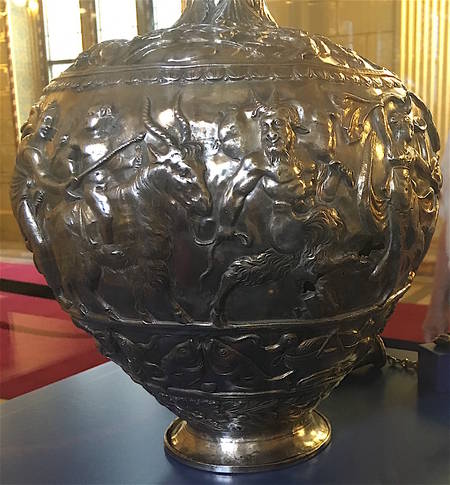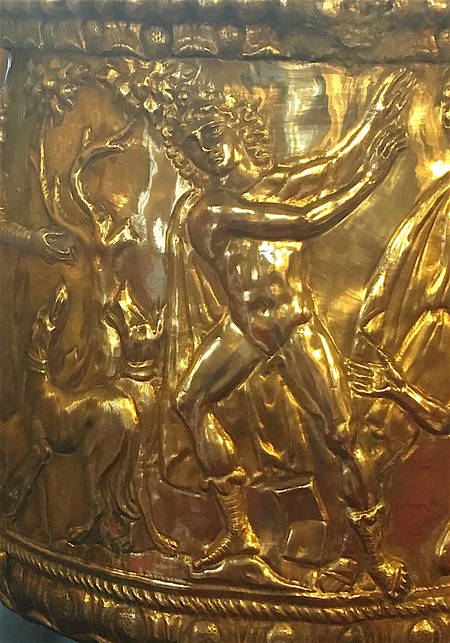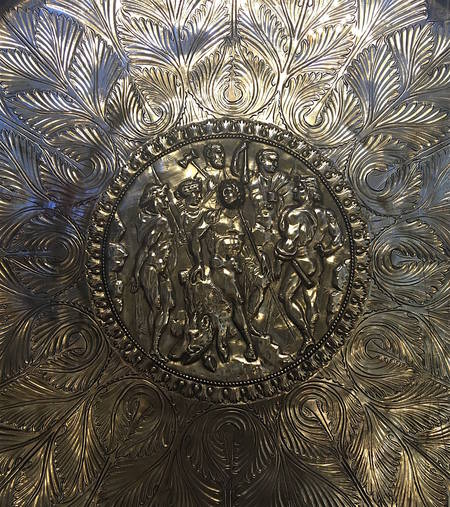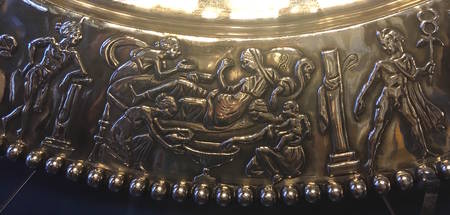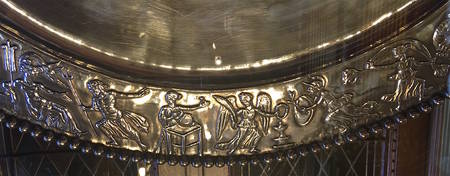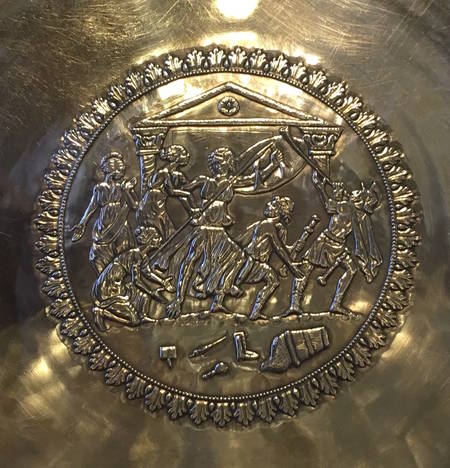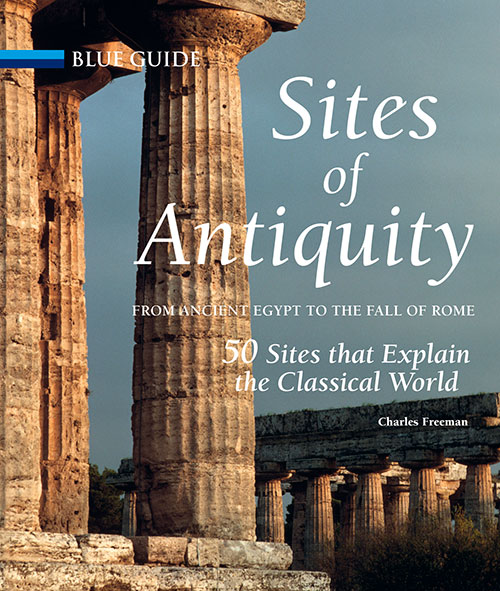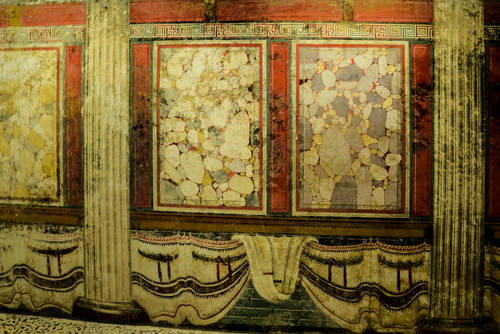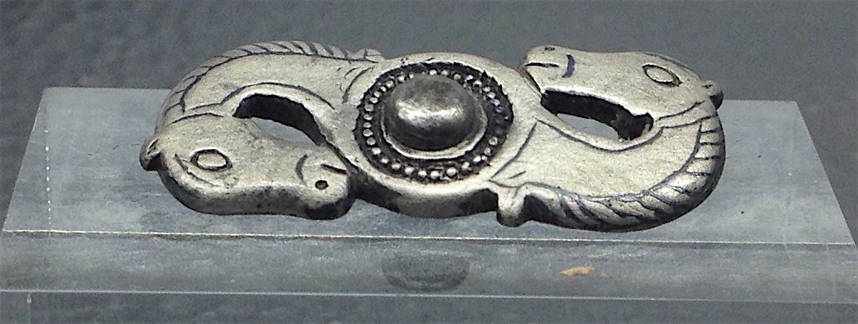
The exhibition currently running in Pavia near Milan (Longobardi. Un popolo che cambia la storia) has been given a good amount of publicity in Italy since it is the first time artefacts produced in the period when the Lombards dominated the Italian peninsula have been collected together from many different institutions. More than 300 works have been lent by upwards of 80 museums and institutions, and some of the artefacts are displayed for the first time. You can see the exhibition in Pavia, in the Castello Visconteo, until 3rd December; then it travels to Naples (Museo Archeologico Nazionale, 21st Dec–25th March); then to the Hermitage (spring 2018). The show is spectacular, featuring Lombard gold jewellery found in tombs and the bas- reliefs sculpted for early Christian churches, beautifully displayed in the vaults of the huge castle which was built in 1360 by Galeazzo II Visconti. Pavia was the capital of the Goths under Theodoric but is particularly famous for the subsequent period, when for two centuries from 572 it was capital of the kingdom of the Lombards. The kings established their residence in a palace here from 626 onwards and the reign of Liutprando (712–44) has been recognised as the most important period for the arts.
The sub-title of the exhibition, ‘a people who changed history’ underlines the result of recent scholarship which gives greater importance to the few centuries following the conquest of Italy by the ‘bearded barbarians’ known as the Lombards in 568. They adopted the Arian faith in the 7th century and by the 8th century they had occupied some two thirds of Italian territory. Their presence in Italy was subsequently marked by the spread of Catholicism.
Although there are no labels in English, the videos, multimedia supports and touchscreens which accompany the display are sufficient to explain the complicated history of this former nomadic tribe from beyond the borders of the Roman Empire. For some 50 years they settled in the former Roman province of Pannonia (present-day Hungary). The Lombard period in Italy saw a fragmentation of power into various dukedoms. Apart from Pavia, the most powerful were Spoleto (in Umbria), Cividale (in Friuli) and Benevento (in Campania). When Charlemagne arrived with the Franks and crowned himself King of the Lombards in Pavia in 774, the peninsula and the powers around the Mediterranean began to lose their importance while the Holy Roman Empire (only formally brought to an end in 1806 by Napoleon) became established north of the Alps.
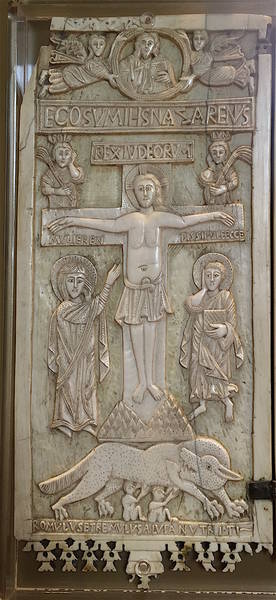
Amongst the most memorable exhibits are the gold jewellery, some worked with filigree, and especially the exquisite pieces from the Museo di Antichità in Turin, the Museo Civica in Tortona, and the Museo Archeologico Nazionale in Naples. There are also two exceptional pieces, one in rock crystal and the other in light and porous sepiolite, known as ‘sea foam’. Larger jewels showing Byzantine influence, today preserved in museums as far apart as Cagliari and Potenza, are also displayed. There are two coloured-glass horns, one of which, in blue glass of the 6th or 7th century, was found in Ascoli Piceno (Marche) and is perfectly preserved. Finds from a rich 7th-century tomb unearthed beneath the church of Santa Giulia in Lucca include a shield with appliqués of Christian symbols (Daniel and his lions, and peacocks). Bronzes which once decorated horses’ bridles come from Molise; and a fascinating little bronze figure of a warrior (proudly displayed on its own) comes from Pavia’s own Museo Civico. The finest of the many Christian bas-reliefs are those from a church in Milan dating from the 7th century showing two lambs adoring a jewelled Cross, and one of a peacock made in the following century found in the monastery of San Salvatore in Brescia (and lent by the Museo della Città there). Among the later works is an exquisite 10th-century ivory diptych found in Macerata and commissioned by the first abbot of the monastery of Rambona (lent by the Vatican Museums): the scenes include a Crucifixion with the personifications of the sun and moon and the wolf nursing Romulus and Remus.
A last room (on the ground floor) proudly records the history of Pavia itself and how the town developed under the Lombards, and how this period of glory was remembered in succeeding centuries.
Visitors are then directed to a part of the Castello Visconteo that has recently been renovated to preserve the treasures from the Lombard period. Here one of the most memorable exhibits is a ‘camp’ saddle found in the bed of the Ticino river. Delicately made in bronze (with a restored leather seat) it could easily be folded up or erected in a hurry as the situation required—a unique find from the period.
The Musei Civici in the castello also include a large picture gallery with paintings from all periods and including some masterpieces by Antonello da Messina, Giovanni Bellini, Hugo van der Goes and many others.
Pavia, with its lovely paved and cobbled streets, is a delightful place to wander and its churches well worth visiting (and three of their crypts dating from the Lombard period are open specially during the exhibition period). If you stay the night, local trains every half hour from the station take you to Pavia’s most famous building, the Certosa di Pavia. Delicious pastries are to be had at Vigoni (Strada Nuova 110).
by Alta Macadam







